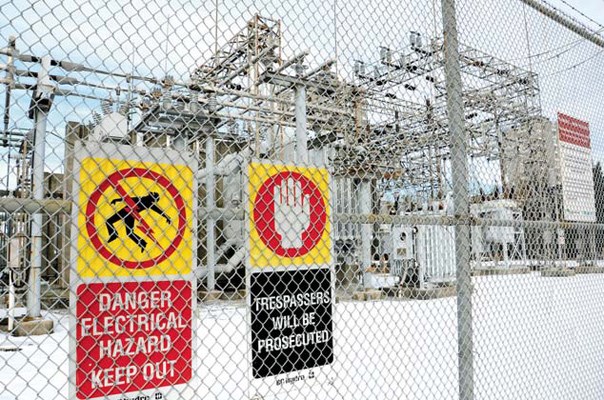B.C. Hydro is investing $35 million in New Westminster to help the city meet its future electricity needs.
Work is getting underway at the New Westminster transmission project, which includes construction of a 2.8-kilometre, 60kilovolt underground circuit.
"What we are doing is we are replacing existing equipment with higher capacity equipment, and where there are components of the substation that are reaching the end of their service life, we are taking the opportunity to replace those as well," said Marcel Reghelini, director of transmission projects and programs for B.C. Hydro. "It's starting with upgrading, replacing two transformers with higher capacity transformers. There are cables and a circuit breaker and other electrical equipment that will be upgraded at the same time."
Notices have been distributed to residents living around the substation at Ovens Avenue and Colborne Street.
"The citizens of New Westminster will not notice any impact to their service," Reghelini said. "You will receive your electricity as normal. Our work will all be in the background. Where folks will see an impact is they will notice our activity around the substation. In particular there are lane closures that we have identified and one-way traffic on Ovens Street."
Reghelini said B.C. Hydro looks at the state of its system on a continuous basis; its planning processes look 15 to 20 years into the future to assess where population is growing and how that will impact electricity demand.
"We plan facilities to be there ahead of the demand growth so that for customers, they get reliable service and they don't see any of that in the background," he said. "In this instance with the New Westminster substation upgrades we are doing, we have an agreement with the city and they plan with us and provide us with the city's expected needs. We provide the service to them and upgrade our substations to meet those requirements."
Unlike other municipalities, the City of New Westminster owns its own electrical utility.
"It's a little different in the sense that we work in coordination with the city and the city's utility, whereas in the rest of the province we provide both the distribution and the transmission service," Reghelini said. "Fundamentally the planning process is the same."
The City of New Westminster's website states the city runs the oldest continuously operating electrical utility in B.C. It distributes electricity to 28,000 residential customers and 3,000 commercial/business customers, maintaining all the electrical systems at city facilities, as well as streetlights and traffic signals.
Rod Carle, general manager of the city's electrical utility, said the city has been working on the project's details with B.C. Hydro for about a year.
He estimated that the substation on Ovens Street provides electricity to about two-thirds of the city, while the city-owned substation on 10th Street provides onethird.
"We have operating agreements with them to operate both substations," he said. "We don't really have any substation expertise - we rely on them."
Carle said there's no choice but to upgrade the substation because it's getting to the point where the current substation can't feed the system.
According to Carle, the city will be adding some feeders that will feed electricity to the substation, with all work set to be complete by August 2013.
City administrator Paul Daminato said the feeder work is part of the city's ongoing maintenance program and will likely not be undertaken until all of the activity around the substation has been completed.
Finance director Gary Holowatiuk said the electrical utility capital program has budgeted $23.4 million in 2013 to pay for the cost of upgrades to the New Westminster substation.
B.C. Hydro's project, which will begin with upgrades to the substation, will take about 18 months to complete. While the substation won't appear any different to outsiders, it will be equipped with more modern equipment.
"Because we are putting new equipment into the system and the equipment typically lasts 40 or 50 years, the equipment that's going in will be current technology versus 40-year-old technology. The fundamental of the equipment and the function is the same," Reghelini said. "We won't be replacing the entire substation."
In addition to work at the substation, the project will include construction of a new underground transmission circuit. It will connect the New Westminster substation to an existing B.C. Hydro substation located near Robert Burnaby Park.
According to B.C. Hydro, most of the underground circuit can be installed under roadways.
Traffic management personnel will be on site to direct traffic as the work progresses from New Westminster to Burnaby because some road closures may be in effect.
"It's a fairly quick process. In the work we have been doing in Vancouver we have been doing roughly a block every five to 10 days," Reghelini said. "This is a smaller capacity cable so it should actually go a little bit quicker."



